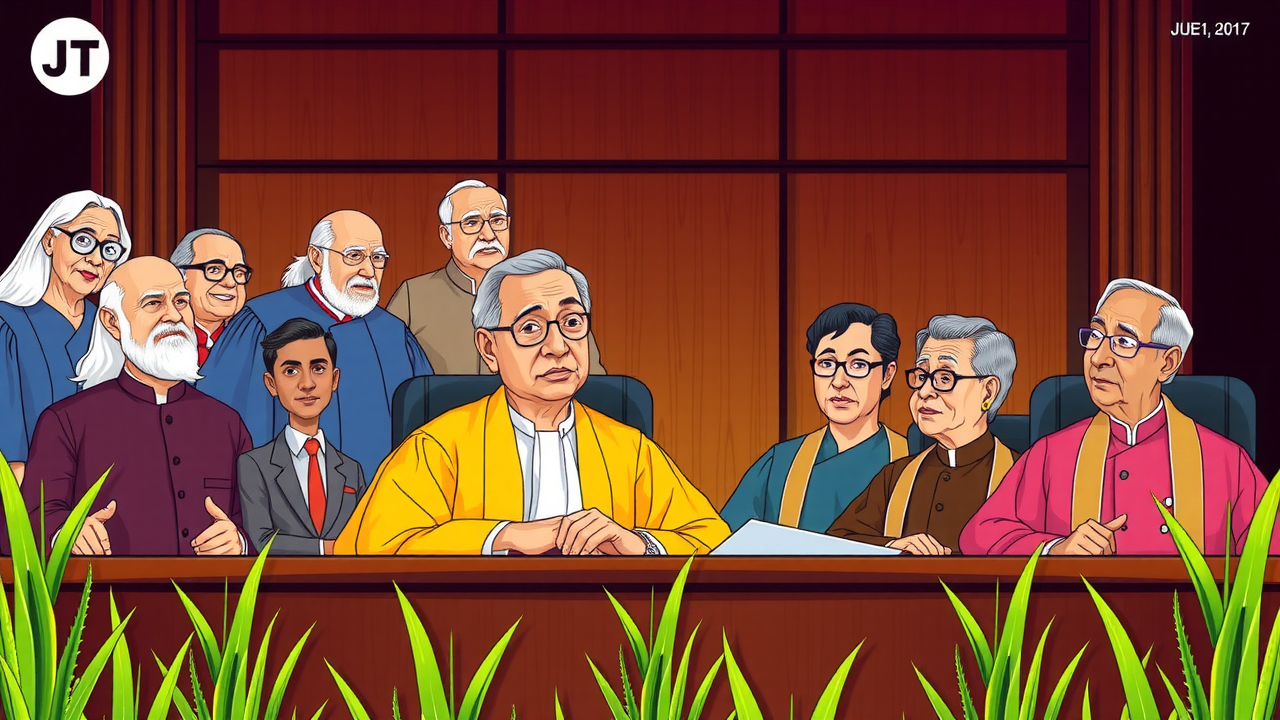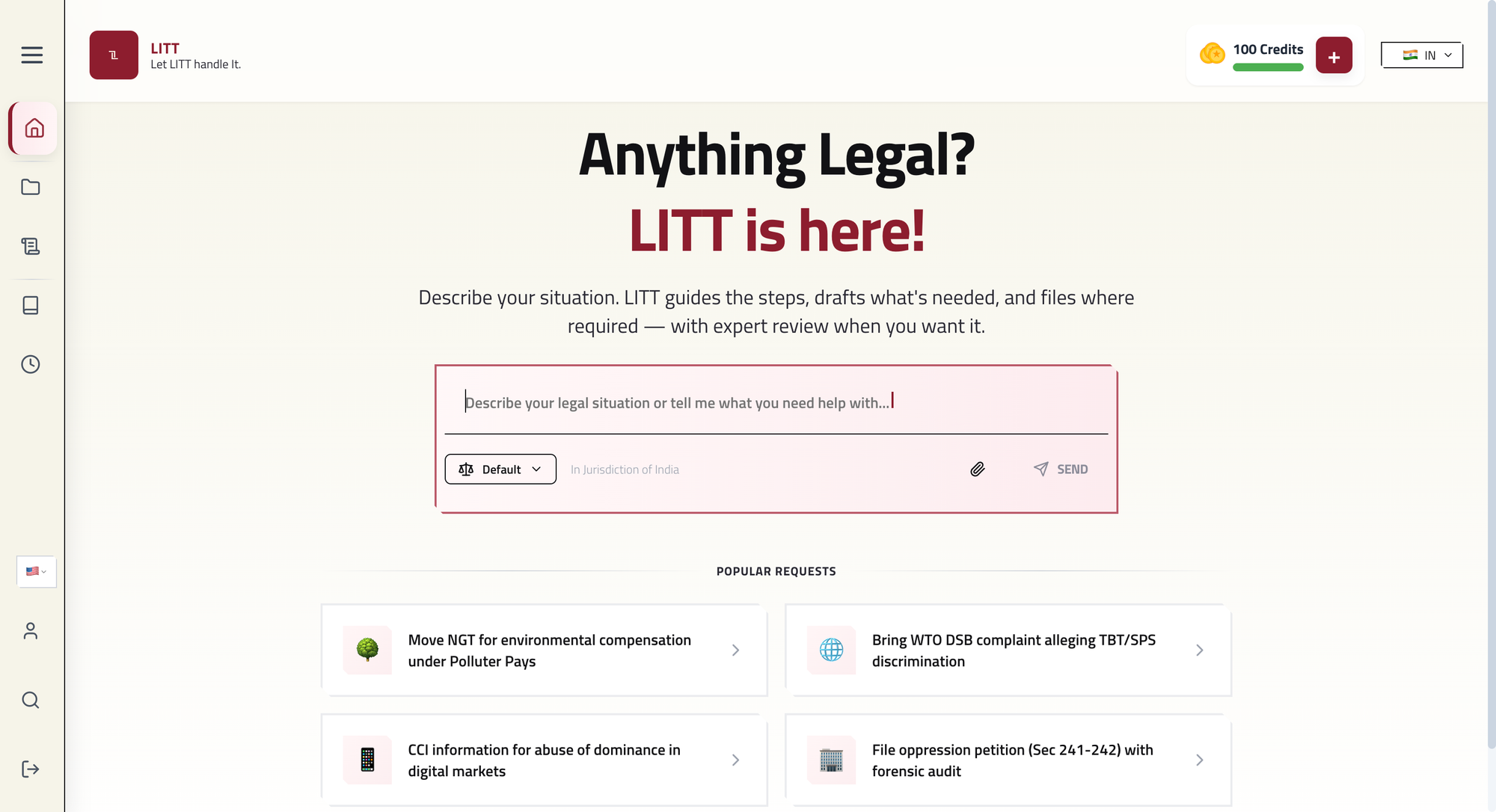The Supreme Court in Sajjan Singh v. State of Rajasthan upheld the 17th Constitutional Amendment, validating its addition of laws to the Ninth Schedule, aimed at supporting socio-economic land reforms.

Hallucination-resistant legal AI (context engineered)
Deep dive into this case study through our podcast!
“The Supreme Court upheld the Constitution (17th Amendment) Act, 1964, ruling that the amendment was valid and did not require special ratification under the proviso to Article 368, despite its impact on Articles 31A and 31B.”
Citation: AIR 1965 SC 845, [1965] 1 SCR 933
Date of Judgment: 30th October, 1964
Court: Supreme Court of India
Bench: P.B. Gajendragadkar (CJ), J.R. Mudholkar (J), K.N. Wanchoo (J), M. Hidayatullah (J), Raghubar Dayal (J)
Facts
- The Constitution (17th Amendment) Act, 1964, added various state laws related to land reforms to the Ninth Schedule, insulating them from being challenged on the grounds of violation of fundamental rights. These laws primarily aimed to advance agrarian reforms by redistributing land and promoting socio-economic justice.
- However, the petitioners, impacted by these laws, argued that the amendment curtailed their fundamental rights and required special ratification under the proviso to Article 368, as it allegedly affected the powers of the High Courts under Article 226.
- The petitioners contended that by adding these laws to the Ninth Schedule, the amendment not only limited judicial review but also undermined the fundamental structure of the Constitution by placing certain laws beyond the scrutiny of courts. They argued that since the amendment indirectly impacted Article 226, which is among the provisions requiring special ratification, it should have been ratified by at least half of the state legislatures.
Decision of the Supreme Court
The Supreme Court ruled in favour of the constitutionality of the 17th Amendment, emphasizing that the amendment did not need special ratification by state legislatures, as it did not directly alter Article 226. The Court stressed the importance of socio-economic reforms and upheld Parliament’s power to amend the Constitution, even if such amendments limited the scope of fundamental rights or the judiciary's ability to review them.
Key legal issues discussed
1. Whether the Constitution (17th Amendment) Act, 1964, required special ratification under the proviso to Article 368?
No
The Supreme Court examined whether the 17th Amendment made direct changes to Article 226, which deals with the power of High Courts to issue writs for enforcing fundamental rights. The proviso to Article 368 mandates that any amendment affecting specific provisions, including Article 226, requires special ratification by state legislatures. However, the Court found that the amendment did not explicitly alter Article 226 but rather had an incidental impact on it due to the insulation of laws in the Ninth Schedule from judicial review.
Chief Justice Gajendragadkar, while delivering the judgment, clarified that Articles 31A and 31B were specifically designed to protect certain laws from being invalidated due to conflict with fundamental rights. The 17th Amendment continued this constitutional objective by adding more land reform laws to the Ninth Schedule, ensuring that they could not be struck down under Part III of the Constitution. The amendment’s primary focus was on securing socio-economic legislation, not on altering the judicial powers conferred by Article 226.
Referring to Para 21 of the Judgment where the court rejected the contention stating that “One of the grounds was that the newly inserted Articles 31A and 31B sought to make changes in Articles 132 and 136 in Chapter IV of Part V and Art. 226 in Chapter V of Part VI, and so, they required ratification under clause (b) of the proviso to Art. 368. This contention was rejected by this Court.”
The Court emphasized that the proviso to Article 368 applies only when an amendment directly modifies the provisions listed under it. In this case, the amendment’s effect on Article 226 was deemed indirect, as it did not change the substantive provisions of the article itself. Thus, the amendment was not subject to the special ratification process. The Court further reasoned that interpreting the proviso broadly would make it challenging to implement socio-economic reforms, which often necessitate amendments that affect the operation of judicial review.
Justice J.R. Mudholkar, concurring with the majority, pointed out that the Constitution envisages a dynamic balance between fundamental rights and socio-economic policies. He noted that while judicial review is a vital aspect of the constitutional structure, it must not obstruct the achievement of broader socio-economic objectives. Mudholkar stressed that the Constitution allows Parliament to make significant amendments to facilitate reforms, provided the changes align with the principles of public welfare and do not alter the basic structure of the Constitution.
2. Whether the Constitution (17th Amendment) Act, 1964, could restrict judicial review by adding laws to the Ninth Schedule?
Yes
The Court clarified that the Ninth Schedule, introduced by the First Amendment in 1951, was intended to protect land reform laws from being invalidated based on fundamental rights. The 17th Amendment added 44 laws to this schedule, mainly related to land reforms, to ensure their effective implementation without being struck down under Part III of the Constitution. The Supreme Court noted that while judicial review is a critical component of the Constitution, the Ninth Schedule provides a necessary shield for laws aimed at achieving socio-economic justice, especially when it comes to land distribution and agrarian reform.
Chief Justice Gajendragadkar emphasized that Article 31B, which insulates laws listed in the Ninth Schedule from judicial scrutiny, was crafted to uphold the socio-economic goals of the state. The Court acknowledged the tension between judicial review and socio-economic legislation but highlighted that such tension is inherent in any evolving democracy. The Court reasoned that the Constitution permits certain laws to be placed beyond the purview of fundamental rights challenges to achieve pressing social objectives.
Stating its stance on the review in earlier judgments, the Court held in Para 22 that “It is true that the Constitution does not place any restriction on our powers to review our earlier decisions or even to depart from them and there can be no doubt that in matters relating to the decision of constitutional points which have a significant impact on the fundamental rights of citizens, we would be prepared to review our earlier decisions in the interest of public good.”
Justice Hidayatullah, concurring with the majority view, warned against excessive reliance on the Ninth Schedule to protect laws indiscriminately, as it could undermine judicial oversight. However, he agreed that the 17th Amendment was consistent with the constitutional mandate to promote socio-economic reforms. He observed that the amendment was valid since its primary purpose was to advance agrarian reforms, a goal deeply rooted in the Directive Principles of State Policy. The addition of these laws to the Ninth Schedule was thus seen as a legitimate exercise of Parliament’s constituent power, aimed at balancing individual rights with social welfare.
3. Whether the amendment was within Parliament’s constituent power under Article 368?
Yes
The Supreme Court reiterated that Article 368 grants Parliament broad powers to amend the Constitution, including provisions related to fundamental rights. The Court stressed that the power to amend the Constitution must be understood in light of the document’s overarching goals, which include achieving social, economic, and political justice. The Court rejected the petitioners’ argument that the amendment curtailed fundamental rights beyond the permissible limits of Article 368.
Chief Justice Gajendragadkar emphasized that the power to amend fundamental rights has been upheld in earlier decisions, including Sankari Prasad Singh Deo v. Union of India[1], where it was established that Parliament has the authority to amend any part of the Constitution, provided the process outlined in Article 368 is followed.
The High Court of Patna held that the relevant Bihar legislation was unconstitutional, whilst the High Courts at Allahabad and Nagpur upheld the validity of the corresponding legislative measures passed in Uttar Pradesh and Madhya Pradesh respectively in Kameshwar v. State of Bihar[2] and Surya Pal v. U.P. Government[3].
He stated that the 17th Amendment was aimed at fulfilling the broader constitutional objective of socio-economic justice, particularly agrarian reform. The Court reasoned that while the amendment limited the scope of judicial review, it did not violate the core principles of the Constitution, as it was intended to address pressing social issues.
Justice Mudholkar added that the Constitution’s framers recognized the need for flexibility in amending the document to adapt to changing social and economic conditions. He noted that the inclusion of specific laws in the Ninth Schedule was a strategic measure to ensure that vital reforms were not impeded by challenges under Part III. Mudholkar cautioned that while such amendments should be used judiciously, they are permissible under Article 368 when aimed at fulfilling the constitutional mandate of social justice.
Justice Hidayatullah also pointed out that Article 368 allows for significant constitutional amendments, as long as they do not alter the basic structure of the Constitution. He emphasized that the amendment's objective to secure agrarian reforms was aligned with the Directive Principles, which reflect the constitutional vision of an equitable society. Therefore, the 17th Amendment was deemed a legitimate exercise of Parliament’s constituent power, intended to harmonize individual rights with the collective good.
[1] [1952] 1 SCR 89.
[2] A.I.R. 1951 Pat 91.
[3] AIR 1951 All 674.


